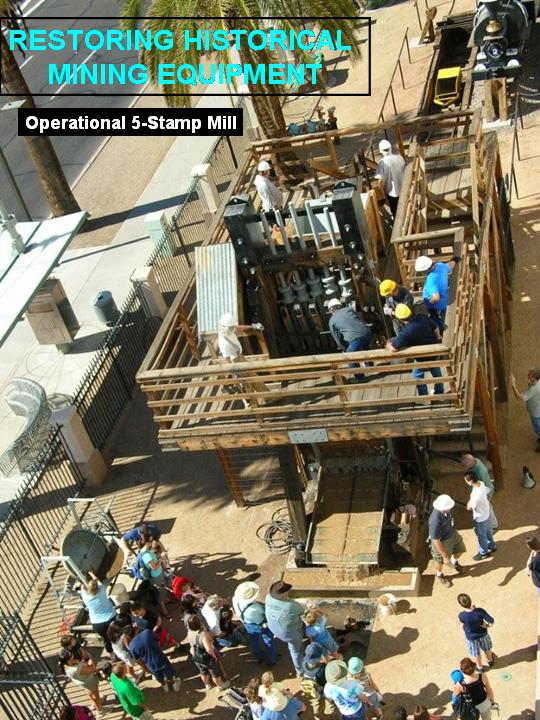I have known Morris Jackson over 30
years and he is the person that got me involved with mining. He started in
building stamp mill models with the construction of an entire mill building,
built with a stamp mill model in October 2009. From there he worked on a 1:48
scale model stamp mill about 30” tall. Around that time period he worked on a
model incline and a framework structure to encase the Swallow Mine Stamp mill
exhibit at the Arizona
Mining & Mineral Museum. The picture below shows his
early pieces:
From there he worked on adding various attachments to the
models, including feeders of various types, sluice tables, jackstands and
mortar boxes. He also made variations on those attachments and the following is
a sample of the various configurations for stamp mills that he came up with. He
also makes three scales, the small scale 1:24 @ 13” tall, 1:36 scale @ 22” tall
and a 1:48 @ 30 “tall. He made 2-stamp, 3-stamp, 4-stamp, 5-stamp, 10-stamp and
20-stamp with battery or 120 volt electric power. The table below covers the
variations.
The mills are made up of the similar basic parts; just the
parts are different sizes based on the scale that is used. As already stated
there are (3) scales 1:24, 1:36 and 1:48. You can see the different components
for a stamp mill below:
The next part of this report shows all of the various stamp
mill sizes, configurations and power configurations. Many of the stamp mills
are designed from actual stamp mills from various areas. If you have an unusual
stamp mill and would like a model, Morris can probably accommodate your needs. We
will start out with the 20 stamp mill and work our way down to the 2-stamp mill:
The next picture shows the difference between the large and the
small mills. The large mills are 1:48 and the small mills are 1:24. The smaller
models are more of an HO gauge.
The final picture shows the stamp mill model expert with an entire
mill building with a primary jaw crusher, 10-stamp mill, shaker tables and all
of the drive belts to run the equipment. He will make these buildings on
request.
There are (4) videos below that discuss stamp mills in detail
and also run the mills so that you can get a feel for what they do.
All you have to do is highlight the site, left click on the highlighted site and it will tell you to "Go to Link", then click on that statement and it will bring up the video.
Operating
10 Stamp Mill http://www.youtube.com/watch?v=pxnisQoMTJ8
Operating
5 Stamp Mill http://www.youtube.com/watch?v=CkwuqtUBULg
6
Floor Level Operating Stamp
Mill Building
http://www.youtube.com/watch?v=HdsPE62Ivvs
6
Floor Level Operating Stamp
Mill Building
http://www.youtube.com/watch?v=3EXPgVCJBao
